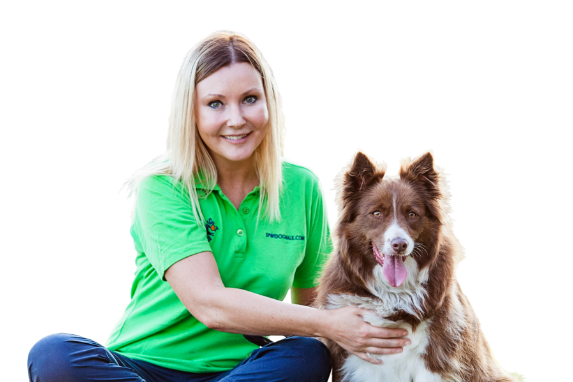Reading Your Dog’s Body Language
After meeting a new client and his dog, one of our Walkers did some personal research to help her understand a dog’s body language a little more. Here are a couple of articles she found useful and wanted to share with us all – thanks Maxine from Cannon Hill!
Reading the Body Language of Dogs
Jan Hoadley
Dogs aren’t people in fur coats – they’re dogs. They have their own communication and most people that have serious issues with their dogs are ignoring the dog’s communication. They let the dog become the leader then don’t like the result. It doesn’t take abusive methods to train a dog – it does take paying attention and learning pack order.
Left to their own devices a pack of dogs always has a hierarchy. There’s the boss dog – who gets first choice on food, water, sleep spots – basically calls the shots on everything. When you have a dog – or several dogs – this boss dog is (or should be) always YOU. You eat first and the #2 member of the pack (the dog) doesn’t EVER even THINK about taking it. YOU decide the prime place to sit; YOU walk through the doorways first. The little things like this makes a difference. It doesn’t to us – most don’t really care that the dog goes down the hallway first. But to the dog that is asserting dominance. If you let him go first you’re telling him “ok you’re boss – sorry – go ahead.” The spiral begins – the dog begins taking food, begins snapping (defending his things and keeping you in line) and as it goes unchecked becomes aggressive. The thing is – people let dogs do this.
Learn to read body language of dogs – even if it means renting wolf documentaries. A dog on alert, defensive or challenging usually has the head and tail up. He’s saying “I’m boss (unless someone challenges).” A submissive dog lowers the head and tail and assumes a posture that isn’t challenging. A more extreme measure is laying down and/or rolling on their back. This is saying “ok you’re boss…I give in…don’t hurt me.” Extremely fearful dogs may urinate.
A typical submissive stance – body and shoulders lowered, head and tail lowered. This is typical of a younger dog greeting an older dog when status is unknown also. She’s clearly saying “I don’t want to fight…I’m no threat…” This sometimes can change quickly.
A bigger danger is a dog who has the tail up or level and is rigid in posture – this is a posture saying “I’m ready to fight if you push me” and this is the posture so often typical before dog bites. Unfortunately too often people respond to it wrong – getting tense and aggressive, throwing something or swinging at the dog, staring him in the eye. All of these things are, in a dog’s world, challenges and if you want to fight he’s ready for it. Usually when the person then gets bitten the fight is over…and the dog is confused as he was just responding to an opponent.
There is another possibility in the bite realm…that of fear biters. These are submissive dogs who have already postured and we keep coming at them. They’ll lie down or rollover and we keep coming. Or we corner them. They’re scared and have already “told” you they’re not a threat and are seeing an aggressor who still pursues them. As a last ditch defense they’ll tense and bite, snap and/or scream. Don’t raise your voice…which only makes things worse. A fearful dog when pushed will bite not in aggression but in self protection. They truly believe they are in danger. So what to do with a fearful dog? If he’s cornered and not in danger…sit down. Like a dog who lays down…sitting down removes the aggression in his eyes. Don’t stare hard at him but watch for signs of anything changing. Reach but don’t try to grab him…let him come to you. Letting him decide to come to you equalizes the pack status somewhat but also helps with the fear. Sometimes a fearful dog who is hungry if you put some food on the ground in front of you will eat…sit quietly and don’t try to reach or touch him while eating. This is for the truly fearful dog…not an aggressive one.
As owners we must always watch signs our dogs give off. Whether it’s a Husky or a Great Dane or a Chihuahua they’ll all have very similar patterns in body language and reacting. Pay attention to his communication and what you’re telling him.
Socialization the Right Way
Top Ten Misunderstood Behaviours Part 1: Raised Hackles.
Posted on May 15, 2012 by Marika S. Bell
I decided to make raised hackles the first in my new series on misunderstood behaviours because of an experience I had earlier today. I was at the dog with Ripley, and he and another German shepherd were saying hello. The other shepherd’s hackles were up all along her back. I said to the owner that I liked the Mohawk look. The dog’s owner replied, “She shouldn’t be doing that, its her being aggressive.” I tend to stay silent at the dog park unless something is going terribly wrong, but I really couldn’t see any aggressive behaviours coming from this dog. “I think she is just over excited.” The lady replied, “No that’s just her being aggressive.” Confused, I took long look at the dog, trying to find a single aggressive behaviour, while the lady chastised and pushed her dog across the park. Nothing, just an over aroused, dog who was overwhelmed by a new situation.
Raised hackles, or pilo-erection, is a reflexive behaviour. When dogs are over excited their hackles will reflect this arousal. The behaviour can be misinterpreted as aggression. While pilo-erection is seen during aggressive encounters; it is not an aggressive behaviour. Raised hackles during high intensity play and fear reactions is quite normal. Some dog’s hackles will be up at the shoulders and continue all the way down to the base of the tail, while others may have hair that is only raised at the shoulder blades, or base of tail alone.
Another dog’s reactions to a dog with raised hackles will vary: some may find it intimidating while others ignore it. The important thing to remember is that your dog is not doing it on purpose. Pilo-erection is reflexive, the only way to stop the behaviour is by decreasing the intensity of the moment.
If your dog regularly has raised hackles when he plays, interrupt his play more often, especially if other dogs seem intimidated by his play style.
If his hackles only go up when he is fearful, teach him a relaxation cue. Karen Overall’s Relaxation Protocol. Hackles can be a good indicator of stress so pay attention, don’t punish.



